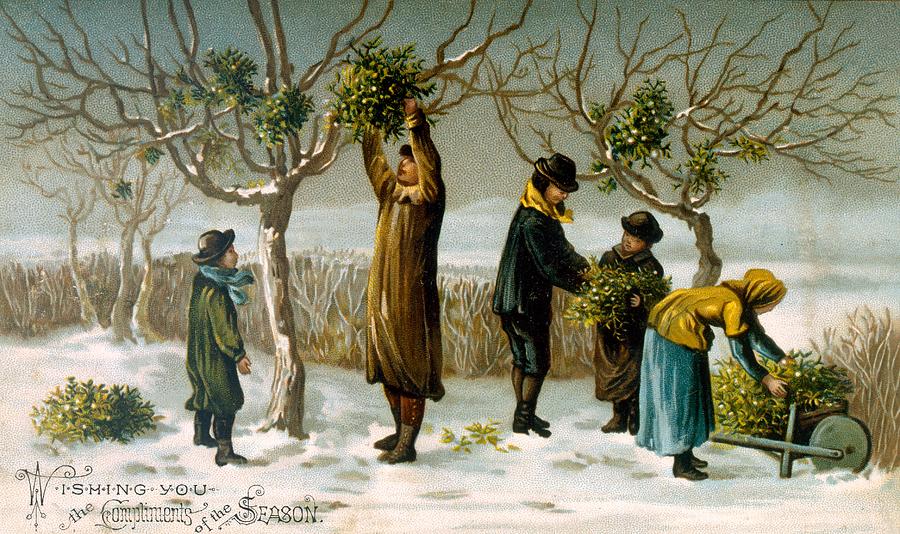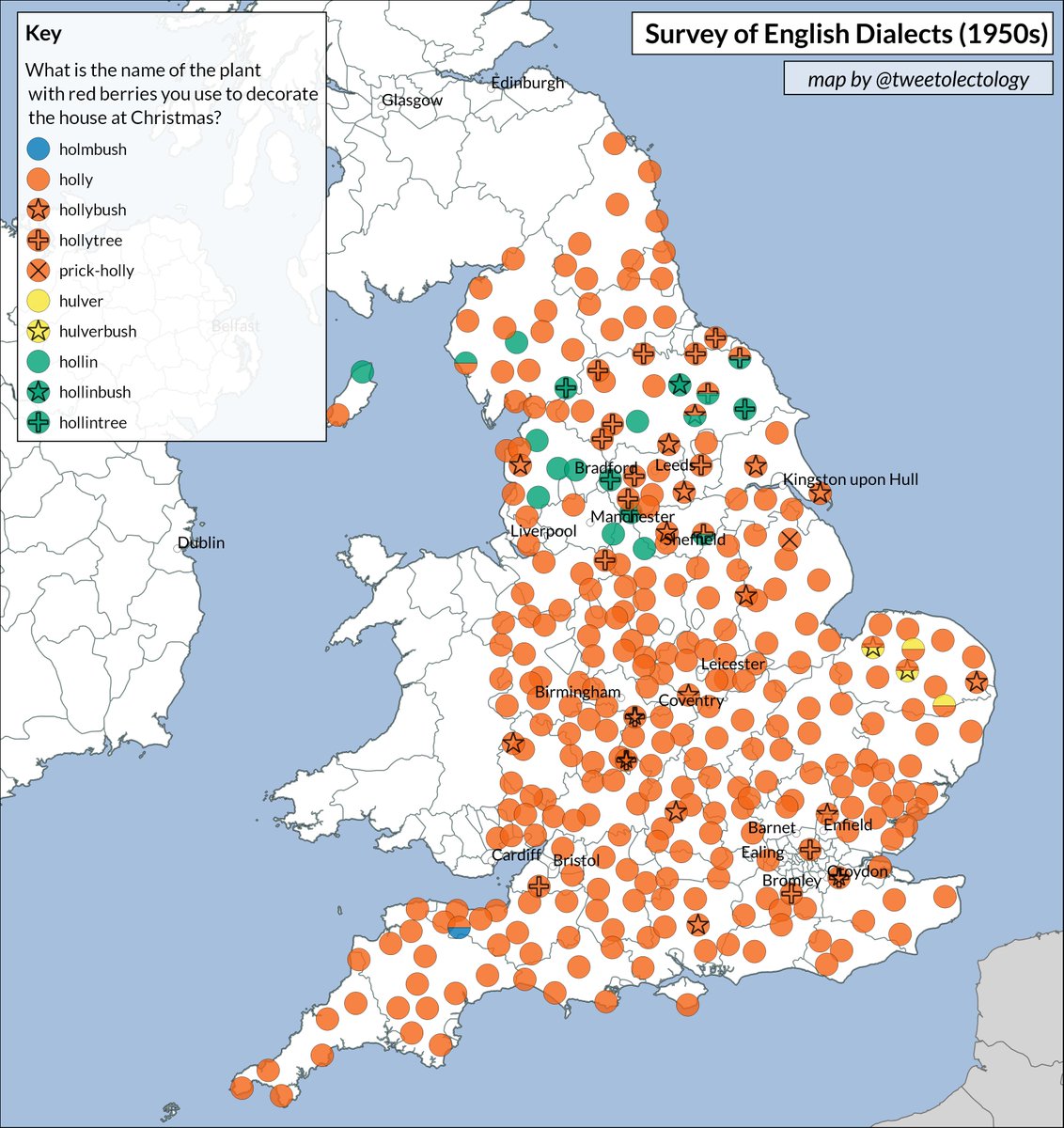Christmas is almost upon us, with its more-than-familiar seasonal decorations and traditions. Here are some brief etymologies…

Mistletoe (Viscum album: Latin for ‘sticky white’) is from Old English mistel (mistletoe, birdlime – in modern German Mist means dung or ‘crap) and Old English tan (twig): the ‘toe’ component came about in the Middle English period, probably as a result of scholars misreading the –an of tan as a plural ending.
Roman chronicler Pliny the Elder reported that the Druid shamans encountered in 1st century AD Britain revered the parasitic plant. They used it in sacrificial rituals and ‘believe that mistletoe given in drink will impart fertility to any animal that is barren and that it is an antidote to all poisons’. Later Norse mythology describes the beloved god Baldur being killed by a shaft of mistletoe, the only living thing that had, because of its innocent insignificance, not been sworn to protect him.
The bird known in English as the mistle thrush doesn’t kiss under but snacks upon mistletoe berries. Its Latin name is turdus (thrush) viscivorus from the noun viscum (mistletoe) and the verb devorare (to devour).
Holly is from Middle English ‘holi’, from Old English hole(g)n, itself from Proto-Germanic *hulin from a posited Proto-IndoEuropean root *kel- meaning prick or cut. We can compare modern Cornish kelynn, Welsh celyn. Holly was once thought to be immune to lightning strikes and legend held that its berries had been white until the blood of Christ dyed them. The plant’s vigour in winter, when most other vegetation had withered or died, led pagans and Christians alike to take it as a sacred token, blending notions of immortality with the suffering symbolised by its prickly leaves. As late as the 1950s there were many different local versions of its name…

Holly’s fellow evergreen, Ivy, is from Middle English ‘ivi’, Old English īfiġ, from Proto-Germanic *ibahs, originating in Proto-IndoEuropean *(h₁)ebʰ-, a word used for several different plants with pointed leaves. Ivy was in mediaeval times believed to be female, and then and later was also thought to ward off the effects of alcohol (tavern drinks were sometimes served in cups made of its wood) and to protect against evil when used as a wreath or garland.
One of the best-known Christmas carols, first published in 1710 but certainly older, memorably unites the two plants…
The holly and the ivy,
When they are both full grown
Of all the trees that are in the wood
The holly bears the crown
O the rising of the sun
And the running of the deer
The playing of the merry organ
Sweet singing of the choir
The holly bears a blossom
As white as lily flower
And Mary bore sweet Jesus Christ
To be our sweet Saviour
O the rising of the sun
And the running of the deer
The playing of the merry organ
Sweet singing of the choir
The holly bears a berry
As red as any blood
And Mary bore sweet Jesus Christ
To do poor sinners good
O the rising of the sun
And the running of the deer
The playing of the merry organ
Sweet singing of the choir
The holly bears a prickle
As sharp as any thorn;
And Mary bore sweet Jesus Christ
On Christmas Day in the morn.
O the rising of the sun
And the running of the deer
The playing of the merry organ
Sweet singing of the choir
The holly bears a bark
As bitter as any gall;
And Mary bore sweet Jesus Christ
For to redeem us all.
O the rising of the sun
And the running of the deer
The playing of the merry organ
Sweet singing of the choir
The holly and the ivy
Now both are full well grown,
Of all the trees that are in the wood,
The holly bears the crown.
O the rising of the sun
And the running of the deer
The playing of the merry organ
Sweet singing of the choir

Carol was adopted from the Old French carole, from Old Italian carola, Latin choraula, a borrowing of Greek χοραυλής (khoraulḗs), the word designating a flute player accompanying a chorus, from χορός (khorós), choir, dance. In French the verb caroler was used in the 14th century of dancing in a circle, while the English noun had come to mean a Christmas ‘hymn of joy’ by 1500.